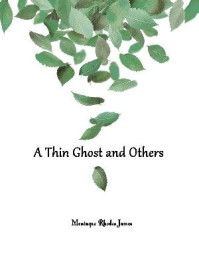




We have now reached a point at which we must consider land which in its essential character is unfavorable to strawberries, and yet which may be the best to be had. The difficulties here are not merely accidental or remediable, such as lack of depth or fertility, the presence of stones or stumps, undue wetness of soil, etc. Any or all of these obstacles may be found, but in addition there are evils inseparable from the soil, and which cannot be wholly eradicated. The best we can hope in such a case is to make up by art what is lacking in nature.
This divergence from the deep, moist sandy loam, the ideal strawberry land, is usually toward a stiff, cold, stubborn clay, or toward a droughty, leachy sand that retains neither fertility nor moisture. Of course, these opposite soils require in most respects different treatment.
We will consider first the less objectionable, that is, the heavy clay. To call clay more favorable for strawberries than sandy land may seem like heresy to many, for it is a popular impression that light soils are the best. Experience and observation have, however, convinced me of the contrary. With the clay you have a stable foundation. Your progress may be slow, but it can be made sure. The character of a sandy foundation was taught centuries ago. Moreover, all the fine foreign-blooded varieties, as well as our best native ones, grow far better on heavy land, and a soil largely mixed with clay gives a wider range in the choice of varieties.
If I had my choice between a farm of cold, stiff clay or light, leachy land, I would unhesitatingly take the former, and I would overcome its native unfitness by the following methods: If at all inclined to be wet, as would be natural from its tenacious texture, I should first underdrain it thoroughly with tile. Then, if I found a fair amount of vegetable matter, I would give it a dressing of air-slaked lime, and plow it deeply late in the fall, leaving it unharrowed so as to expose as much of the soil as possible to the action of frost. Early in the spring, as soon as the ground was dry enough to work and all danger of frost was over, I would harrow in buckwheat and plow it under as it came into blossom; then sow a second crop and plow that under also. It is the characteristic of buckwheat to lighten and clean land, and the reader perceives that it should be our constant aim to impart lightness and life to the heavy soil. Lime, in addition to its fertilizing effects, acts chemically on the ground, producing the desired effect. It may be objected that lime is not good for strawberries. That is true if crude lime is applied directly to the plants, as we would ashes or bone-dust; but when it is mixed with the soil for months, it is so neutralized as to be helpful, and in the meantime its action on the soil itself is of great value. It must be used for strawberries, however, in more limited quantities than for many other crops, or else more time must be given for it to become incorporated with the soil.
The coarse green straw of the buckwheat is useful by its mechanical division of the heavy land, while at the same time its decomposition fills the soil with ammonia and other gases vitally necessary to the plant. A clay soil retains these gases with little waste. It is thus capable of being enriched to almost any extent, and can be made a storehouse of wealth.
Where it can be procured, there is no better fertilizer for clay land than the product of the horse-stable, which, as a rule, can be plowed under in its raw, unfermented state, its heat and action in decay producing the best results. Of course, judgment and moderation must be employed. The roots of a young, growing plant cannot feed in a mass of fermenting manure, no matter what the soil may be. The point I wish to make is that cold, heavy land is greatly benefited by having these heating, gas-producing processes take place beneath its surface. After they are over, the tall, rank foliage and enormous fruit of the Jucunda strawberry (a variety that can scarcely grow at all in sand) will show the capabilities of clay.
Heavy land is the favorite home of the grasses, and is usually covered with a thick, tenacious sod. This, of course, must be thoroughly subdued before strawberries are planted, or else you will have a hay- field in spite of all you can do. The decay of this mass of roots, however, furnishes just the food required, and a crop of buckwheat greatly hastens decomposition, and adds its own bulk and fertility when plowed under. I think it will scarcely ever pay to plant strawberries directly on the sod of heavy land.
While buckwheat is a good green crop to plow under, if the cultivator can wait for the more slowly maturing red-top clover, he will find it far better , both to enrich and to lighten up his heavy soil; for it is justly regarded as the best means of imparting the mellowness and friability in which the roots of strawberries as well as all other plants luxuriate.
There are, no doubt, soils fit for bricks and piping only, but in most instances, by a judicious use of the means suggested, they can be made to produce heavy and long-continued crops of the largest fruit.
These same principles apply to the small garden-plot as well as to the acre. Instead of carting off weeds, old pea vines, etc., dig them under evenly over the entire space, when possible. Enrich with warm, light fertilizers, and if a good heavy coat of hot strawy manure is trenched in the heaviest, stickiest clay, in October or November, strawberries or anything else can be planted the following spring. The gardener, who thus expends a little thought and farsighted labor will at last secure results that will surpass his most sanguine hopes, and that, too, from land that would otherwise be as hard as Pharaoh's heart.
Before passing from this soil to that of an opposite character, let me add a few words of caution. Clay land should never be stirred when either very wet or very dry, or else a lumpy condition results that injures it for years. It should be plowed or dug only when it crumbles. When the soil is sticky, or turns up in great hard lumps, let it alone. The more haste the worst speed.
Again, the practice of fall plowing, so very beneficial in latitudes where frosts are severe and long continued, is just the reverse in the far South. There our snow is rain, and the upturned furrows are washed down into a smooth, sticky mass by the winter storms. On steep hillsides, much of the soil would ooze away with every rain, or slide downhill en masse. In the South, therefore, unless a clay soil is to be planted at once, it must not be disturbed in the fall, and it is well if it can be protected by stubble or litter, which shields it from the direct contact of the rain and from the sun's rays. But cow- peas, or any other rank-growing green crop adapted to the locality, is as useful to Southern clay as to Northern, and Southern fields might be enriched rapidly, since their long season permits of plowing under several growths.
Lime and potash in their various forms, in connection with green crops, would give permanent fertility to every heavy acre of Southern land. In my judgment, however, barnyard manure is not surpassed in value by any other in any latitude. If one owned clay land from which he could not secure good crops after the preparation that has been suggested, he had better either turn it into a brick-yard or emigrate.
Sandy Ground. —Suppose that, in contrast, our soil is a light sand. In this case the question of cultivation is greatly simplified, but the problem of obtaining a heavy crop is correspondingly difficult. The plow and the cultivator run readily enough, and much less labor is required to keep the weeds in subjection, but as a rule, light land yields little fruit; and yet under favorable circumstances I have seen magnificent crops of certain varieties growing on sand. If sufficient moisture and fertility can be maintained, many of our best varieties will thrive and produce abundantly; but to do this is the very pith of our difficulty. Too often a sandy soil will not retain moisture and manure. Such light land is generally very deficient in vegetable matter; and therefore, whenever it is possible, I would turn under green crops. If the soil could be made sufficiently fertile to produce a heavy crop of clover, and this were plowed under in June, and then buckwheat harrowed in and its rank growth turned under in August, strawberries could be planted as soon as the heat of decay was over, with excellent prospects of fine crops for the three succeeding years. Did I propose to keep the land in strawberries, I would then give it another year of clover and buckwheat, adding bone-dust, potash, and a very little lime in some form. The green crop, when decayed, is lighter than clay, and renders its tenacious texture more friable and porous; it also benefits the sandy soil by supplying the absent humus, or vegetable mould, which is essential to all plant life. This mould is also cool and humid in its nature, and aids in retaining moisture.
With the exception of the constant effort to place green vegetable matter under the surface, my treatment of sandy ground would be the reverse of that described for clay. Before using the product of the horse-stable, I would compost it with at least an equal bulk of leaves, muck, sods, or even plain earth if nothing better could be found. A compost of stable manure with clay would be most excellent. If possible, I would not use any manure on light ground until all fermentation was over, and then I would rather harrow than plow it in. This will leave it near the surface, and the rains will leach it down to the roots—and below them, also—only too soon. Fertility cannot be stored up in sand as in clay, and it should be our aim to give our strawberries the food they need in a form that permits of its immediate use. Therefore, in preparing such land, I would advise deep plowing while it is moist, if possible, soon after a rain; then the harrowing in of a liberal top-dressing of rotted compost, or of muck sweetened by the action of frost and the fermentation of manure, or, best of all, the product of the cow-stable. Decayed leaves, sods, and wood-ashes also make excellent fertilizers.
In the garden, light soils can be given a much more stable and productive character by covering them with clay to the depth of one or two inches every fall, and then plowing it in. The winter's frost and rains mix the two diverse soils, to their mutual benefit. Carting sand on clay is rarely remunerative; the reverse is decidedly so, and top- dressings of clay on light land are often more beneficial than equal amounts of manure.
As practically employed, I regard quick, stimulating manures, like aguno, very injurious to light soils. I believe them to be the curse of the South. They are used "to make a crop," as it is termed; and they do make it for a few years, but to the utter impoverishment of the land. The soil becomes as exhausted as a man would be should he seek to labor under the support of stimulants only. In both instances, an abundance of food is needed. A quinine pill is not a dinner, and a dusting of guano or phosphate cannot enrich the land.
And yet, by the aid of these stimulating commercial fertilizers, the poorest and thinnest soil can be made to produce fine strawberries, if sufficient moisture can be maintained. Just as a physician can rally an exhausted man to a condition in which he can take and be strengthened by food, so land, too poor and light to sprout a pea, can be stimulated into producing a meagre green crop of some kind, which, plowed under, will enable the land to produce a second and heavier burden. This, in turn, placed in the soil, will begin to give a suggestion of fertility. Thus, poor or exhausted soils can be made, by several years of skilful management, to convalesce slowly into strength.
Whether such patient outlay of time and labor will pay on a continent abounding in land naturally productive is a very dubious question.
Coarse, gravelly soils are usually even worse. If we must grow our strawberries on them, give the same general treatment that I have just suggested.
On some peat soils the strawberry thrives abundantly; on others it burns and dwindles. Under such conditions I should experiment with bone-dust, ashes, etc., until I found just what was lacking.
No written directions can take the place of common-sense, judgment, and, above all, experience. Soils vary like individual character. I have yet to learn of a system of rules that will teach us how to deal with every man we meet. It is ever wise, however, to deal justly and liberally. He that expects much from his land must give it much.
I have dwelt at length on the preparation and enrichment of the land, since it is the cornerstone of all subsequent success. Let me close by emphasizing again the principle which was made prominent at first. Though we give our strawberry plants everything else they need, our crop of fruit will yet be good or bad in the proportion that we are able to maintain abundant moisture during the blossoming and fruiting season. If provision can be made for irrigation, it may increase the yield tenfold.


